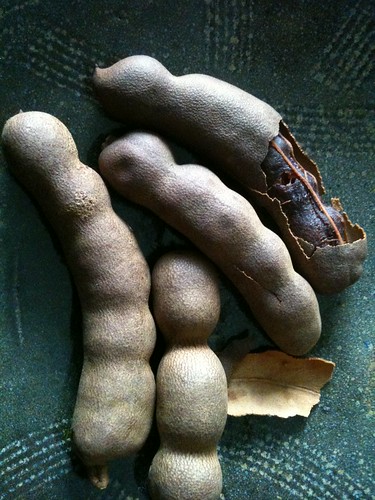Anatomy of Tamarind
My friend brought me some fruit - figs that she stole from yards in Kitsilano (an annual tradition, without which summer is not quite real for her... FYI: If she does not steal them, the fruit goes to waste. Fact).
She also brought me 6 tamarind pods, which looked like dry beans or very plump carobs; but inside their brittle pods is a soft, pliable, date-like textured pulp. Inside it there are pits.
A couple of days later, I promptly turned into a refreshing drink. The flavour is not nearly as intense as I remember it from the tamarind merchants in the Jerusalem's souk; though it's not unlikely that my memory is confusing them with that of "souss" aka licorice root drink.
I'm sure there are many better recipes out there for tamarind refreshments; what I did was simply peel off the shells, and soak the pulp in boiling water (just enough to cover). That makes removing the seeds or pits quite an easy task. Let the pulp sit for a while, until very soft (I just forgot about it for a couple of hours); then strain and push it through a fine sieve, and dilute with more water. I used only 6 pods for a whole liter of water. Add a sweetener to taste: either raw sugar, or agave syrup. It's cooling and refreshing, and could also make a great base for cocktails. If you have any other ideas for using tamarind I'm listening!

Tamarind, a photo by Ayala Moriel on Flickr.



